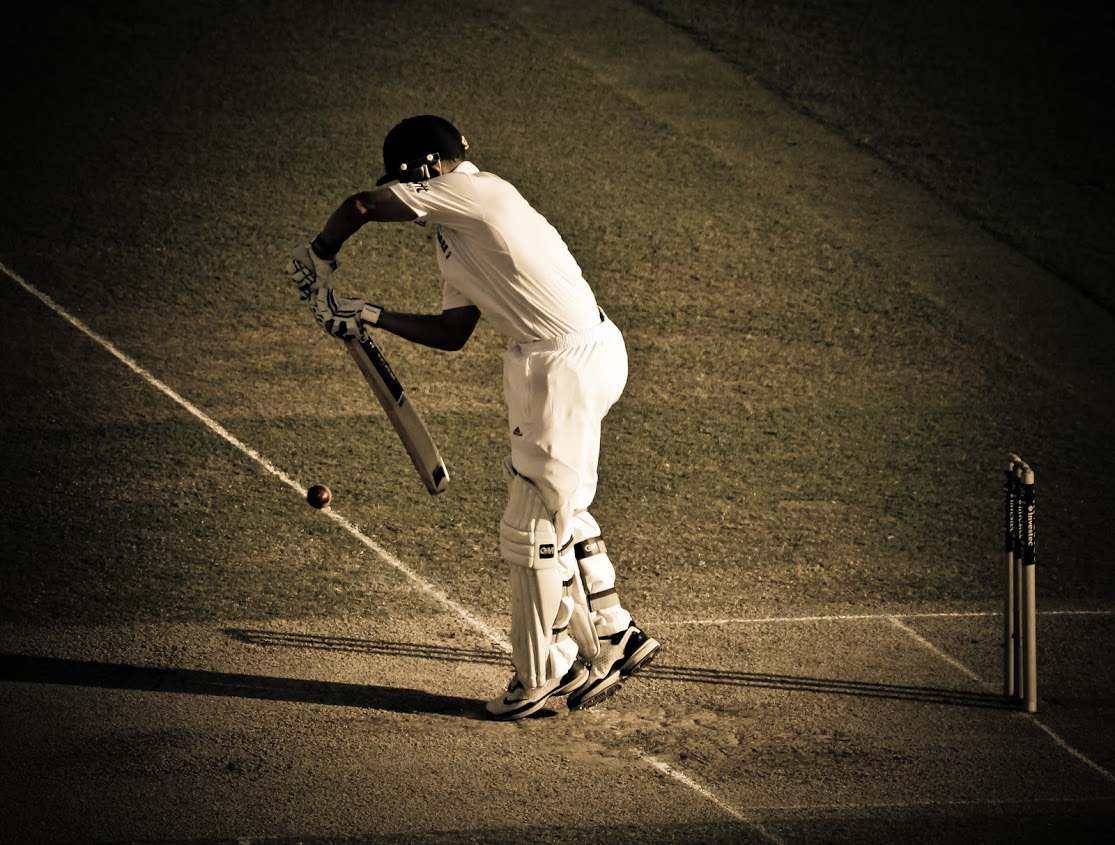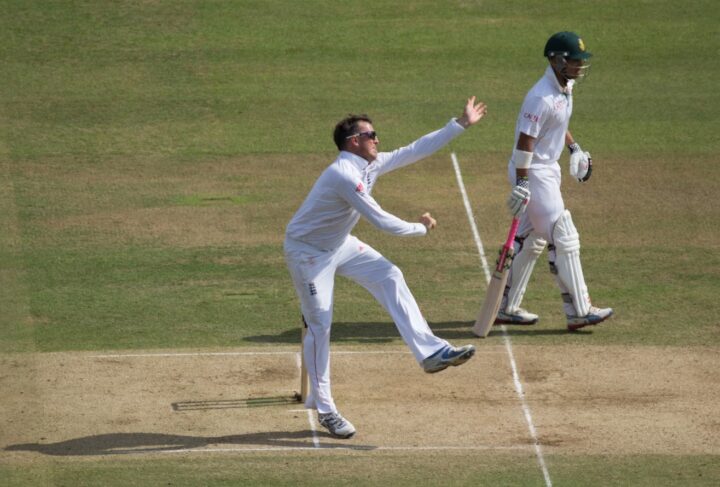We’ve never talked about drugs on this site before. I hasn’t really seemed necessary. Call me naive but I’ve never really thought that steroids (or other performance enhancing drugs) could particularly enhance a cricketer’s abilities. The sport is so technical that sheer bulk, or muscle strength, always seemed slightly irrelevant.
Although I’ve often thought that a bowler’s stamina could be aided by hormones, and that a batsman might find it easier to relax (or feel confident) if he used certain recreational substances, drugs have never really been on my radar … unless we’re talking about the aptly named Keith Piper’s penchant for smoking cannabis.
However, the changing face of cricket and the rise of T20 has brought the issue into sharper focus. Gone are the days when cricketers could be slightly out of shape and still perform wonders for their country (or franchise). Today’s professional cricketers are generally finely tuned athletes with less fat on them than a water biscuit. What’s more, there’s more emphasis on hitting the ball absolutely miles – indeed, the ability to do so can land one a lucrative and life changing IPL contract.
Although I’m not convinced that muscle strength determines a bowlers ability to hit 90mph – I’m no expert but I’ve always thought it’s to do with fast-twitch fibres rather than brute force – science and technology are always developing new ways to enhance a bowler’s pace. This might involves developing certain smaller muscles, or a certain group of muscles, or simply enhancing a player’s strength and conditioning. What’s more, things like bat speed and power can obviously be increased by spending hours in the gym.
Unfortunately this emphasis on strength and conditioning makes the selective use of drugs more tempting to players. Therefore I guess it was only a matter of time before another doping scandal hit cricket – after all, sports like athletics, football and tennis are frequently dogged by rumours of cheating and dodgy Spanish doctors. One just hopes that these controversies won’t become more common as the financial rewards, and therefore the desire to seek an unfair advantage, increase over time.
Given this context, I’m very concerned that one of the T20 circuit’s premier globetrotters, Andre ‘call me Dre’ Russell, has just been banned for a year for ‘whereabouts violations’ – in other words, failing to tell the anti-doping authorities where he was on three separate occasions. This is an important breach of protocol because random drugs test are an important part of WADA’s armoury – and if the authorities don’t know where Russell is, then he can’t be subjected to these random tests.
Considering that many drugs cheats take prohibited substances ‘out of season’ (to avoid being caught) it’s important that top sportsmen are monitored at all times. Nobody has a clue whether Russell has actually taken anything illegal, but his failure to report his whereabouts (whether he’s personally responsible for doing this or not) is therefore rather serious and has been punished accordingly.
I’d be interested to know what you all make of Russell’s punishment. Is one year too long, too short, or about right? Please bear in mind that he’ll now miss both the Pakistan T20 thingy and the IPL – in other words, this is going to hit ‘Dre’ in the pocket rather hard. I’d also like to know whether you think drug taking is rife in cricket, or whether this whole thing is a storm in a urine pot.
In other news …
Jack Leach has been talking about the remedial work he’s done on his action. I recommend you give this article by David Hopps a read. This whole situation just gets weirder and weirder in my view, and I’m still not satisfied with the explanation. Here’s the paradox:
15 degrees is the legal limit because after that a kink (or throw) is visible to the naked eye
Jack Leach was ‘well above’ the 15 degree limit
Nobody could tell (with the naked eye) that Jack Leach was chucking last summer.
Call me old fashioned but I usually trust my eyes when it comes to this thorny issue. Whenever a bowler has been sent for remedial action, or called for chucking, it’s usually quite obvious why. For example, when Sunil Narine, Kane Williamson, Marlon Samuels, James Kirtley, Saeed Ajmal and Murali etc aroused suspicions my immediate thought was ‘quite right’. But when I heard the news about Jack Leach I just thought ‘eh’?
This whole situation is incredibly bizarre and it probably hasn’t been handled by the ECB in the right way (shock horror)! I’m also slightly bemused that Leach heard about the issue from Andy Flower, who phoned him up when he was on holiday. Way to ruin someone’s holiday, Andy ;-)
James Morgan









I’m quite surprised you mention that ‘gone are the days when cricketers could be slightly out of shape and still perform wonders for their county (or franchise). I know it gets forgotten because of the proliferation of t20 tournaments around the world but have we already exorcised Northants thrilling victory in last year’s blast with the likes of Levi and Kleinveldt looking as though they had enjoyed more than a few braai barbecues?
Then there is Kieron Pollard too, who has spent much of the last 7/8 years carrying more than a few pounds and he’s had a successful franchise career and is a multi-millionaire.
Anyway, the point is that I don’t think that ICC have handled this well at all. This has been ongoing for nearly a year and only now can they take action. The ban is too short, but unfortunately there is a precedent when a certain Shane Keith Warne was allowed a year ban rather than 2 when he claimed he took his mummy’s slimming tablets.
At least it was better than Mohammed Asif for whom, a while before he got convicted for spot-fixing was allowed a rather short ban by a Pakistani judge for having taken illegal substances because he came from a small village.
I’m afraid I don’t think that cricket doesn’t have it’s problems. How the blazes are players going to get through some often shocking schedules without a bit of extra help? Risks and rewards eh?
As for Leach, it sounded dodgy at the time and sounds no better now. It came across as a bit of a stitch up from Flower and the gang. Even worse that, even though they might consider his action legal (not ever having given it much regard before) there will be extra scrutiny on him. What price that we have a ruined a talented young bowler at a time when England are crying out for a decent spinner, let alone an outstanding one.
I thought Pollard looked considerably heavier this year than in the past – and was pretty ordinary in the Big Bash. On the other hand, old stagers like Brads Hodge and Hogg and David Hussey were still able to do well.
The other use of steroids that has application in any sport, even if it is not one that puts an emphasis on bulk or power, is that they speed injury recovery. That would always have been the suspicion with Shane Warne before the 2003 World Cup – that the diuretics were to mask steroid use not for strength or bulk, but to speed recovery from his shoulder injury.
He should have been banned for calling himself “Dre Russ” !
I think the analysis betrays a naivety about drugs. Although I cannot speak from direct experience I do have second hand knowledge of the effect of drugs from my time in the gym, which is used by the local (pro) ice hockey club. The benefit is twofold; firstly using steroids and HGH aids recovery. This means users can spend more time in the gym and have more intense sessions, which is clearly beneficial (especially off season) in a sport where (as is pointed out) physical fitness has become more important. More intense sessions also mean greater power. Secondly, drug use can directly promote lean muscle mass. The February edition of The Cricketer has an article on drug use which references the Russell case (pointing out his ‘tree trunk’ muscles). It makes a direct comparison of the current situation in T20 with baseball in the 1990s, where huge increases in home runs and distances hit were subsequently found to be driven by almost universal steroid abuse. I am not suggesting such use is that widespread in cricket, but it points to where the benefit accrues – which is to the bat in T20 rather than to bowlers.
The major problem in cricket, in relation to drugs, is the low level of testing, the absence of retro testing and the apparently relaxed attitude of the authorities. Few cricketers are regularly tested and when something is found (as in the Russell missed tests) the wheels grind excessively slowly. If this is not addressed one effect will be that T20 will have no chance of future admission to the Olympics or any other multi sport games.
Finally a couple of observations. I have changed my username from Andy to AndyB as we seem to have another Andy. And my reference to the local ice hockey club…. You would be surprised how often I have heard players (usually juniors) referring to ‘juicing up’ as they get changed. Drugs are a lot more available than many casual sports players and followers may think.
Hi AndyB! Thanks for your thoughts. I’m well aware I’m no expert on this topic so please everyone feel free to add to the debate. I’m just a fan like everyone else.
It’s a symptom of increased financial gain. Players like Russell are freelance agents and need all the help they can get travelling the world swinging their bats all over the place. t20 rewards power hitting, not technique and all the other things that test cricket examines. He just needs to make 30 off 15 and he has done his job, being richly rewarded for it. It is inevitable when they want to ensure they are near the top wage earners, they will look to make sure they remain desirable to the highest bidders by any means necessary.
Jack Leach is a victim of ECB’s scarcely disguised attempts to justify his non-selection (I suspect he would have been England’s leading wicket-taker both against Bangladesh and India) – all there should be thoroughly ashamed of themselves.
I have no idea what is behind the Jack Leach affair but there is clearly something in the wind. I doubt that it’s a conspiracy to justify non selection. The ECB have never felt the need to be accountable to anyone.
On drugs: This juggernaut has been racing towards us from the beginning of franchise based (= mercenary staffed) cricket. It may be going to far to say that the life of a free-lance T20 player is only tenable on a regime of intensive gym and pharmacologically aided maintenance, but it is not far off. Of course, the most skilful remain the most watchable, but that is not the mainspring of the industry. It has less and less to do with actual cricket.
On Leach: I have no idea why the ECB decided not to select, but it started building the defences in the middle of the last English season, by disseminating remarks about his psychological immaturity, and so on. This seemed unnecessary, as the other candidates had not at that stage been “discredited” by the unsuccessful tour. Leach became a player whose relative standing hugely profited by not being selected. It may be that it would have profited by being selected, but there has to be one scenario that is a counterfactual, and the comment stands. I agree that there is a big difference between what I have seen of Leach and “dartists” like Ajmal, but it remains possible that the coaching system actually picked up some kink that would have led to greater embarrassment if it got reported while he was bowling for England on tour. Still a whiff of fish remains in the air.
This might explain the Leach affair:
http://www.espncricinfo.com/england/content/story/1080584.html
So, not really a chucker at all, which explains the bemusement, but he was technically breaching the 15% rule earlier in his action. Given Leach’s own comments, the story is credible.
I wish him well, as England needs him.
Yes, it was interesting, and not sinister. I think it credibly shows that a genuine problem had emerged and Leach was given help to deal with it; he seems to see it that way. The problem is that the 15 degree rule fails to pick up the things that “dartists” do to impart extra spin, reverse spin etc, which depend on other forms of flexion than the mere elbow straightening. I thought Leach was completely clear of these black arts, and it is perfectly consistent for him to have been “bowling” normally, while breaching this badly framed rule. Of course, the other black arts are all much easier if you are bending your elbow 45 degrees, and almost impossible when you straighten it out.
“I’m not convinced that muscle strength determines a bowlers ability to hit 90mph”.
I recommend reading George Dobell’s recent article on Stuart Broad on Cricinfo which has some interesting thoughts from Steffan Jones and the conditioning of modern fast-bowlers. Of course, it doesn’t have to be the case that something helps, merely that some people think that it does (or might).
On the Russell case more generally, the length of time it’s taken to reach a decision has been ridiculous. A few Twitter wags have suggested that, on the precedent of the Jamaican relay-team, England should be declared world T20 champions! There was an interesting comment about Russell from one of his former BBL colleagues during one of the C5 matches – I think it was Michael Carberry who said that when he saw Russell in the dressing-room he was a mass of injuries (especially his knees). Speeding up recovery from injury was the major factor in the Warne and Yasir Shah cases…..
Whole years have passed without cricket’s drug-testing regime finding anyone has acted illegally. It’s obviously pitifully inadequate (unless one believes nobody has taken anything – which I don’t). The day a Big Three player is detected is the day I’ll believe the sport is clean. In the meantime, we’ve ended up with the odd WI or Pakistan player being detected who aren’t rich enough to afford the cleverest doctors or aren’t considered untouchable at the highest levels of the game’s governance (and I don’t just mean India by that).
Finally, it’s worth pointing there are issues with what is considered legal in the game. I highly recommend reading a Guardian article from a few months ago about drugs in cycling and that sport’s attitude to cortisone. Cycling clearly regards it as performance-enhancing.
Agree that the drug analysis is naive. Also no mention of the long term harm of steroids for short term gain. There has to be a crack down as some countries have too relaxed an attitude about drugs. It will hit cricket hard if it allowed to drift. Young people don’t appear to recognise the dangers never mind the impact of being caught.
As for Leach – if he has a problem best sorted now. There can be no leniency because it will be picked up. It took too long to have Ajmal checked. Now the climate is stricter. Apparently the West Indians have invented a sleeve which means testing can be even more accurate. The spinners who don’t chuck will be pleased that this can be measured to help eradicate the problem.
Hi Jackie. The article (like many on here) wasn’t supposed to be a comprehensive look at the issues. I’m just writing as a fan and trying to get some debate going. Researching this topic would take an inordinate amount of time. As you suggest it’s a really complex issue. Another thing I could have mentioned is that traces of illegal drugs often only stay in the bloodstream for a short amount of time; therefore it’s even more tempting to cheat. I’m just guessing here, but I imagine plenty of mediocre sportsmen think it’s a risk worth taking.
Whilst thinking about something else entirely, Jack Leech once looked funny at Andy Flower*, and as a result Flower’s lackeys at Loughborough have mysteriously discovered a kink in his action, that he will never fully recover from, and a horse’s head in his bed.
*Or maybe he whistled during a team debriefing.
Some massively important reading on Cricinfo about the ICC meting taking place this weekend.
In case you haven’t seen it (and I’m expecting an imminent blog) Alastair Cook has resigned as England captain.